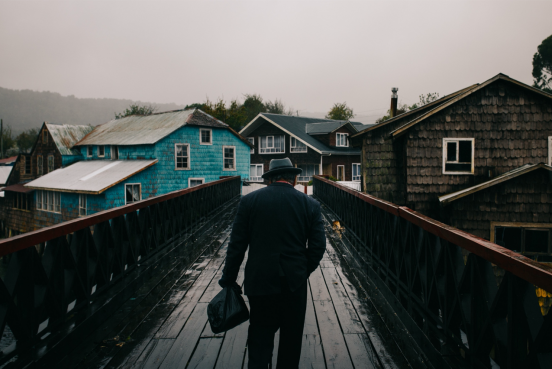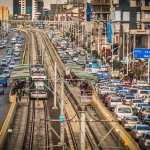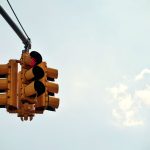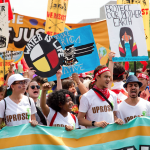The coastal waters of the archipelago of Chiloe, Chile are periodically impacted by algal blooms, commonly referred to as a “red tide” event. In the past the red tide cycle has been consistent; however, the impact of climate change and increasing environmental pressure from commercial aquaculture in the region led to two massive algal blooms in 2016. While the first algal bloom affected commercial aquaculture operations, the second bloom impacted artisanal fishing and shellfish harvest practices. Approximately 6,000 artisanal fishers were out of work and the food supply of the region was severely disrupted. The Chilean government and commercial aquaculture industry asserted that climate change and the coinciding El Nino event were to blame, whereas the artisanal fishing community beleive that it was weak environmental regulations and commercial aquaculture practices to blame.
To evaluate what happened and why, this report will use economic theory to analyze the Chiloe fishery event. Section 1 of the report will describe the underlying causes leading to the problem. Section 2 will then examine the economic factors that explain why the problem happened, and provide leading practices to illustrate how it can be fixed. Section 3 will use this information to recommend economic and policy tools available to correct for these problems in the Chiloe Fisheries Sector.
SECTION 1: INTRODUCTION
What Happened?
The Huilliche people, indigenous to the Archipelago of Chiloe in southern Chile, have inhabited the area for more than 2,600 years (Daughters, 2016). Artisanal fishing is a subsistence activity in the region and this way of life is as much a part of their culture as language (Wekimun, 2016). These groups have traditionally harvested small fish and mollusc species native to the area, and for most of the 20th century the region remained isolated from the wider economic activities of the mainland and world markets. This disconnect in economic activity was due to infrastructure deficiencies , low availability of productive land, and volatile seasonality of the artisanal fishery sector (Barrett et al. 2002).
Despite its many flaws, the military dictatorship of the 1970s-1990s helped to shift the country toward global market participation and revitalized private-sector participation to encourage growth in export-oriented economic activities (Barret et al. 2002). Among many of the new economic activates in the country, salmon aquaculture was introduced in the Chiloe region in the 1980’s, intended solely for export (Barton et al. 2008). By the mid-nineties, aquaculture production in Chile grew to become the second largest supplier in the world, second to Norway (FAO, 2012), and the third most important economic sector in Chile, behind copper mining and forestry. The rapid development of all three of these major economic sectors in Chile (Mining, Forestry and Fisheries) highlights a national shift toward commodification of natural resources at the expense of the sustainability of marine and terrestrial ecosystems (Barton & Roman, 2016). This rapid economic shift presents an interesting opportunity to examine the social and environmental effects of rapid economic growth, from an economy based on subsistence agriculture, artisanal fishing and shellfish collection – into one which incorporates both traditional practices and modern, industrial-scale aquaculture operations in the same space.
Labour Flows
The current population of this region includes more than 155,000 inhabitants which remain characterized by a high degree of rurality and persistent poverty (Barton & Roman, 2016). Although commercial aquaculture initially introduced in Chiloe focussed on mollusc and algae species – and often operated by local cooperatives; harvesting of fish species by private, multi-national corporations quickly grew to dominate the export market. Of all species, salmon is the most intensively managed and, therefore the most important economic species for the region (Barton & Roman, 2016). These rapid economic changes to the region have shifted labour patterns. Historically the region has been a net exporter of labour, with men travelling hundreds of kms to work on ranches in Chilean and Argentine Patagonia; however, with new employment opportunities on and around the archipelago, the region has become a net importer of labour. The commercial aquaculture boom in the region has also impacted the social landscape – as much of the labour demand has been for higher skilled positions, driving rural-to-urban migration (Barton & Roman, 2016). Finally, traditional communities have also been impacted by the incorporation of female participation in the labour market which has changed gender dynamics of the communities and region (Barrett et al. 2002).
Environmental Flows
The region is made up of more than thirty islands with hundreds of kilometers of coastline. The coastal waters exist in a marginal sea with strong currents, but are periodically impacted by algal blooms, commonly referred to as a “red tide” event. In the past the red tide cycle has been consistent and relatively predictable, recurring at long-term consistent frequency and intensity; however, none of the previous events compared to the events of 2016 (CORFO, 2016).
The first algal bloom of 2016 occurred in February and affected salmon species – but was responsible for killing over 6.1 million fish (approximately 2,700 tonnes) in aquaculture systems. By March 2016, mortality of salmon species had reached an estimated 40,000 tonnes with a total industry loss of 25 million fish (Buschmann et al. 2016). According to official estimates, 57% of these dead fish were processed, 30% taken to landfill and the remaining 13% (4,600 tonnes) were dumped 140 kms offshore (Mascareno et al. 2018). This loss represented approximately 12% of the annual production from commercial aquaculture in the region, and more than 4,500 workers – many of which were local residents – were dismissed (Gonzalez, 2016).
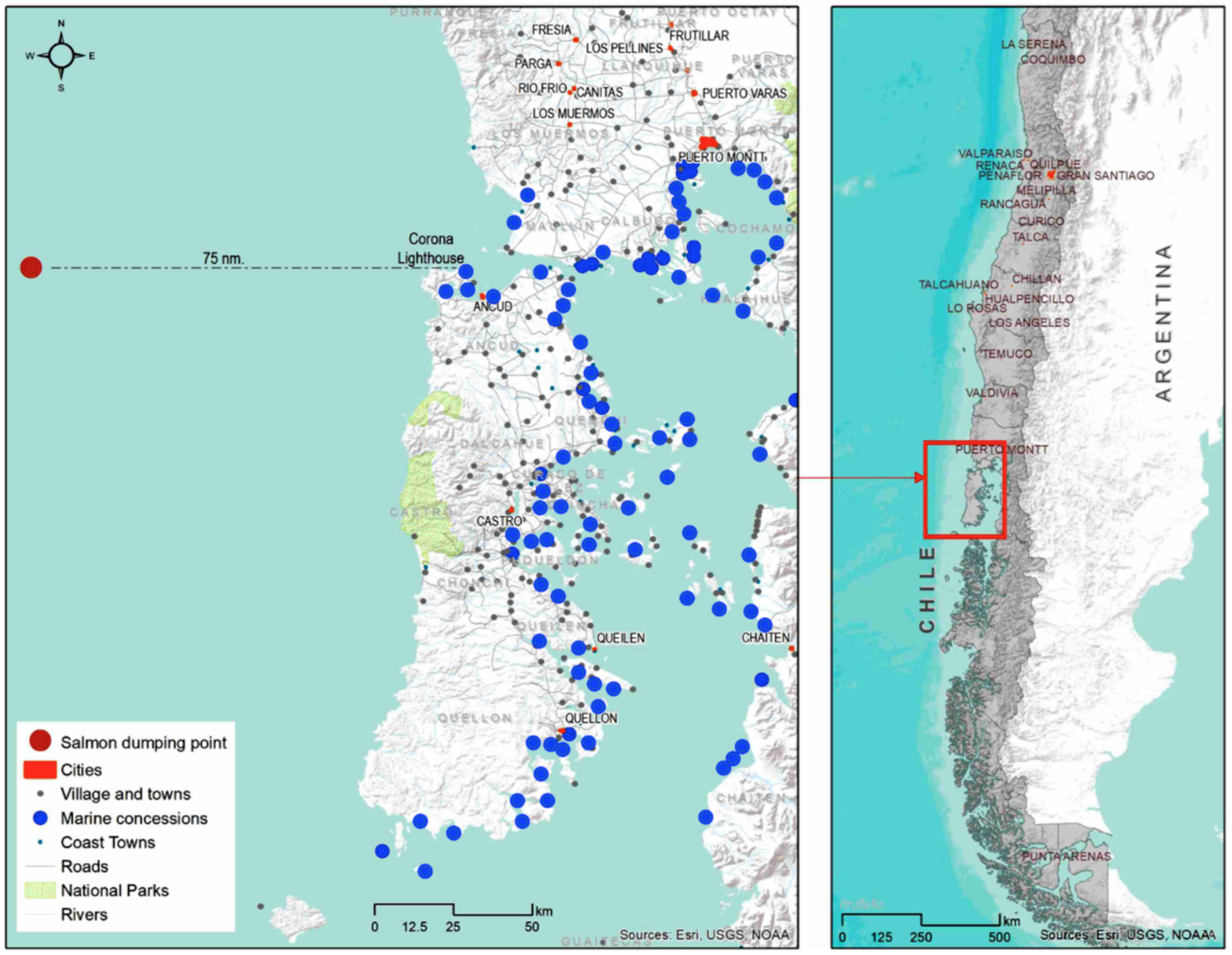
Figure 1: Commercial Aquaculture Intensity in Chiloe (Mascareno et al. 2018).
A few weeks later, a second bloom occurred (this time affecting shellfish) by an algal species associated with the red tide. In response, the Ministry of Health banned all fishing and shellfish harvesting over 2,000 kms of the coast of Chiloe (Mascareno et al. 2018). Interestingly, while the first algal bloom affected commercial aquaculture operations, the second bloom impacted artisanal fishing and shellfish harvest practices. Approximately 6,000 artisanal fishers were out of work and the food supply of the region was severely disrupted. Government action was slow and protests were organized, with local communities assigning blame to the salmon aquaculture industry for fuelling the second bloom by dumping the 4,600 tonnes of dead fish into the area the month before which led to the second bloom (Mascareno et al. 2018).
Globally, the rising frequency and intensity of red tide events are believed to be linked to climate change (Gilibert et al. 2014); however, growing evidence suggests human impacts due to poor watershed management and rising aquaculture practices (increasing marine pollution) act as additional stressors, contributing to the rise in the intensity of these events (Anderson, 2009). For example, Heisler et al. found a positive correlation between algal bloom intensity and anthropogenic eutrophication, indicating that rising nutrient inputs to the system increase the severity of the red tide event (Heisler et al. 2008). Further, Munoz et al. also found correlation between concentration of salmon farms, high levels of nitrogen in sea vegetation and an increasing intensity of algal blooms in Southern Chile (Munoz et al. 2018).
SECTION 2: APPLIED ECONOMIC THEORY
Why Did it Happen?
While consensus on the problem definition was generally reached, the cause of the problem varied widely by stakeholder group. The Chilean government and commercial aquaculture industry asserted that climate change and the coinciding El Nino event were to blame, whereas the local artisanal fishing community asserted that it was weak environmental regulations and commercial aquaculture practices of the salmon industry to blame (Mascareno et al. 2018).
To evaluate the underlying causes of the problem, an economic analysis will begin by first examining the economic factors that explain much of the tension described in the section above. This information will be used to recommend economic and policy tools available to correct for these problems in the Chiloe Fisheries Sector. Policy recommendations will be provided in Section 3.
Ecological Economic Model
Beginning with a simplified model of the relationship between the environment and our economy (Figure 2), we can see that the economy relies on a flow of inputs from the environment (in the form of raw materials and ecosystem services like pollination), but also produces outputs which are discharged back into the environment (in the form of air, water and soil emissions and waste). While the study of resource economics focusses on the natural resource requirements as inputs to the economy, the field of environmental economics looks at the outputs of an economy discharged into the environment in the form of waste. Viewing the economy through the lens of both resource economics and environmental economics allows for a more holistic valuation of resource flows through an economy, and allows for recognition of the influence of market failures within an ecological economic model.
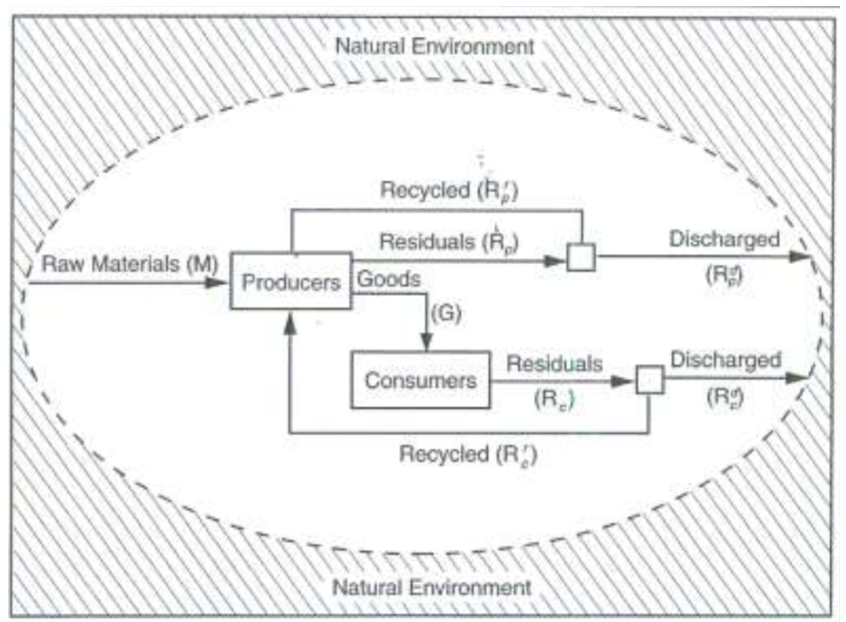
Figure 2: Ecological Economic Model
Market Failures
Market failures arise when the allocation of goods and services in an economy are inefficient or lead to a social loss. The first failure relevant to the Chiloe case involves the definition of the fishery resource as public, private or something in between. The marine ecosystem of the archipelago is rivalrous to the extent that at a certain point, adding additional boats or fishers will create competition for space and resources; but it is also true that prohibiting access to this resource is administratively difficult, especially when the resource is viewed as a flow that moves through time rather than rigid stock existing in place today. For these reasons, fisheries resources are characterized as a common good, or a common pool resource.
Figure 3: Resource Definition
Traditionally, the seasonality of the artisanal fishing sector and physical isolation has kept the number of fishers engaged in the industry below the carrying capacity of the ecosystem. This suggests that the resource was not affected by rivalry and could be managed as a public good without significant or prolonged effect on the resilience of the ecosystem functionality. The problem arose when the marine ecosystem of the archipelago was divided into private concessions for commercial aquaculture projects, creating rivalry (between aquaculture farms and artisanal fishing) for physical space as well as for the ecosystem services that the area provides.
The second failure illustrated in the Chiloe example involves the unallocated social cost of increasing production of the fishery resource, at a lower price. This ‘marginal external cost’ (indicated in Figure 4 by the teal triangle) includes the cost of all negative externalities which arise from the increase in resource extraction. An externality is an unsolicited cost or benefit to a party which is not captured in the economic framework (Baumol & Oates, 1993). In the Chiloe case it is an accumulation of costs (negative externalities) to the local communities which are unpriced and unaccounted for. Among the costs incurred by communities from the individual profit-maximising behaviour of commercial aquaculture include: predation of native species by salmon who have escaped from aquaculture systems, poor management practices related to antibiotics and chemical inputs, ecosystem eutrophication, changing gender roles and loss of cultural resilience through impacts to subsistence activities (Barton & Roman, 2016). While externalities often arise in the absence of fully defined property rights (Baumol & Oates, 1993), redefining property rights can be administratively unfeasible, or unethical for subsistence communities who rely on marine harvesting practices.
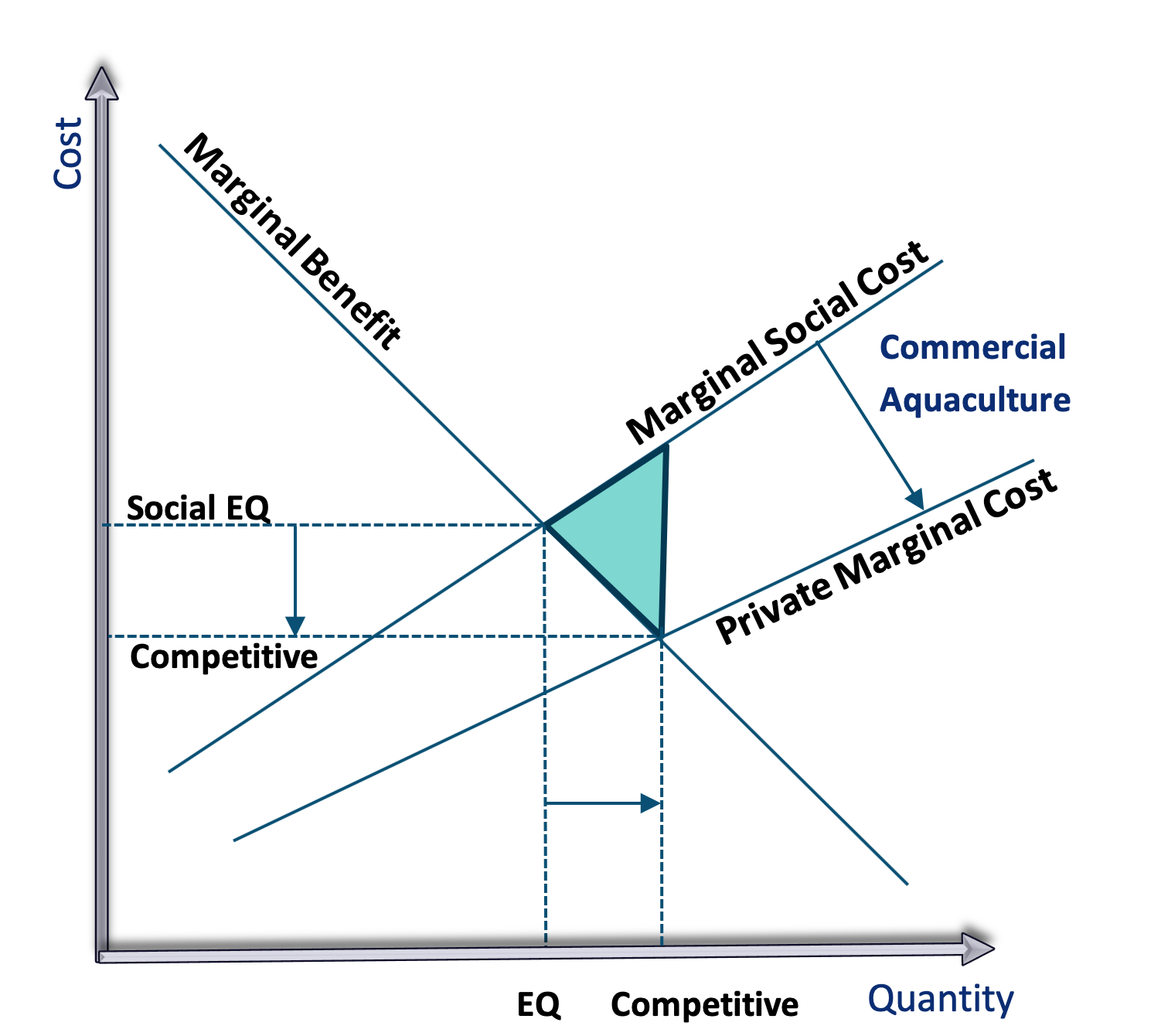
Figure 4: Market Effect of increased production
Social-Ecological System Approach
A social-ecological system (SES) approach looks at how human and environmental systems interact and influence one another. Observing and understanding how these systems operate gives greater predictive power for how they will respond to a change or perturbation in the system. The degree to which they absorb the disturbance is a reflection of the resilience. Viewing the 2016 red tide events from an SES perspective incorporates the effects of shifting ocean temperature and acidity, and El Nino pattern intensity as a result of global climate change. These shifts are pushing the ecosystem away from its natural equilibrium which results in reduced system resilience.
In addition to a changing climate, the ecosystem is also responding to changes in the local environment due to the increase in productive output from commercial aquaculture. Increasing chemical inputs into the system – through food, hormone or antibiotic inputs – increase the suspended solid content in the water as well as the nutrient load. This boost of nutrient availability is conducive to algal growth which can reduce the oxygen content of the water and increase the rate of sedimentation (Mascareno et al. 2018). Over time these perturbations (climate and aquaculture) have increased in magnitude and the social, economic and environmental systems have become tightly coupled (interdependent).
When multiple changes overlap (in time or in space) they can create negative feedback loops, exposing a systems “hidden fragilities which are typically only revealed through failure” (Scheffer, 2009). If the change is great enough, or lasts for long enough, it can push the entire system over a threshold, or into an alternate stable state. Once this occurs, it can be incredibly difficult, expensive, or even impossible to revert. These events are linked with regime shifts such as collapse of fisheries which have been well documented around the world. In such cases, slow shifts create emergent dynamics which culminate in a sudden crisis (Gunderson & Holling, 2002).
In the Chiloe case, the cumulative impacts of increasing industrial intensity of aquaculture activities, coupled with impacts from climate change, led to the addition of excess nutrients above the carrying capacity of the marine environment. When this was coupled with the seasonal effects of an El Nino year, the system was not able to avoid the first algal bloom event. As described above, by March of 2016 salmon mortality reached an estimated 40,000 tonnes – of which, 4,600 tonnes was dumped 140 kms offshore. Despite disagreement on the exact direction of ocean currents over the following weeks, much of these dead fish were transported back into the area – leading to a significant boost of nutrients into the already overloaded water. This is debatably a causal factor in triggering the second algal bloom which was associated with shellfish dieback and the national ban on fishing by the Ministry of Health.
How Can it be Fixed?
In order to reduce these stresses, restore system resilience (social, environmental and economic systems), and ultimately prevent similar events from occurring in the future, it is necessary to restrict behaviour or activities that negatively impact the functional operation of the system as a whole, and encourage behaviour or activities that improve the operation. As a first step, the optimal level of resource extraction should be determined.
Bio-Economic Model
The Gordon-Schaefer Model is a useful tool to determine a range of maximum yields depending on the values of different policy objectives (see Figure 5). For example, if the goal is to maximize the number of jobs, fishing effort (E) will be set at E3 – the Bionomic Equilibrium (BE). This level of output (also known as the Open Access equilibrium), is where the total cost of the fishing effort (TC) equals the total revenue (TR) and adding one additional boat would result in a decrease to total system utility. If the goal is to maximise the number of fish, fishing effort will be set at E2 – the maximum sustainable yield (MSY) is the point at which total revenue (TR) is maximized. Finally, if the goal is to maximize the economic gain, fishing effort will be set at E1 – the maximum economic yield (MEY) where the difference between total revenue and total cost are maximized and therefore, where the maximum total profit can be realized. In the absence of resource management or policy, the market will naturally tend toward the open access equilibrium, where total costs equal total revenue.
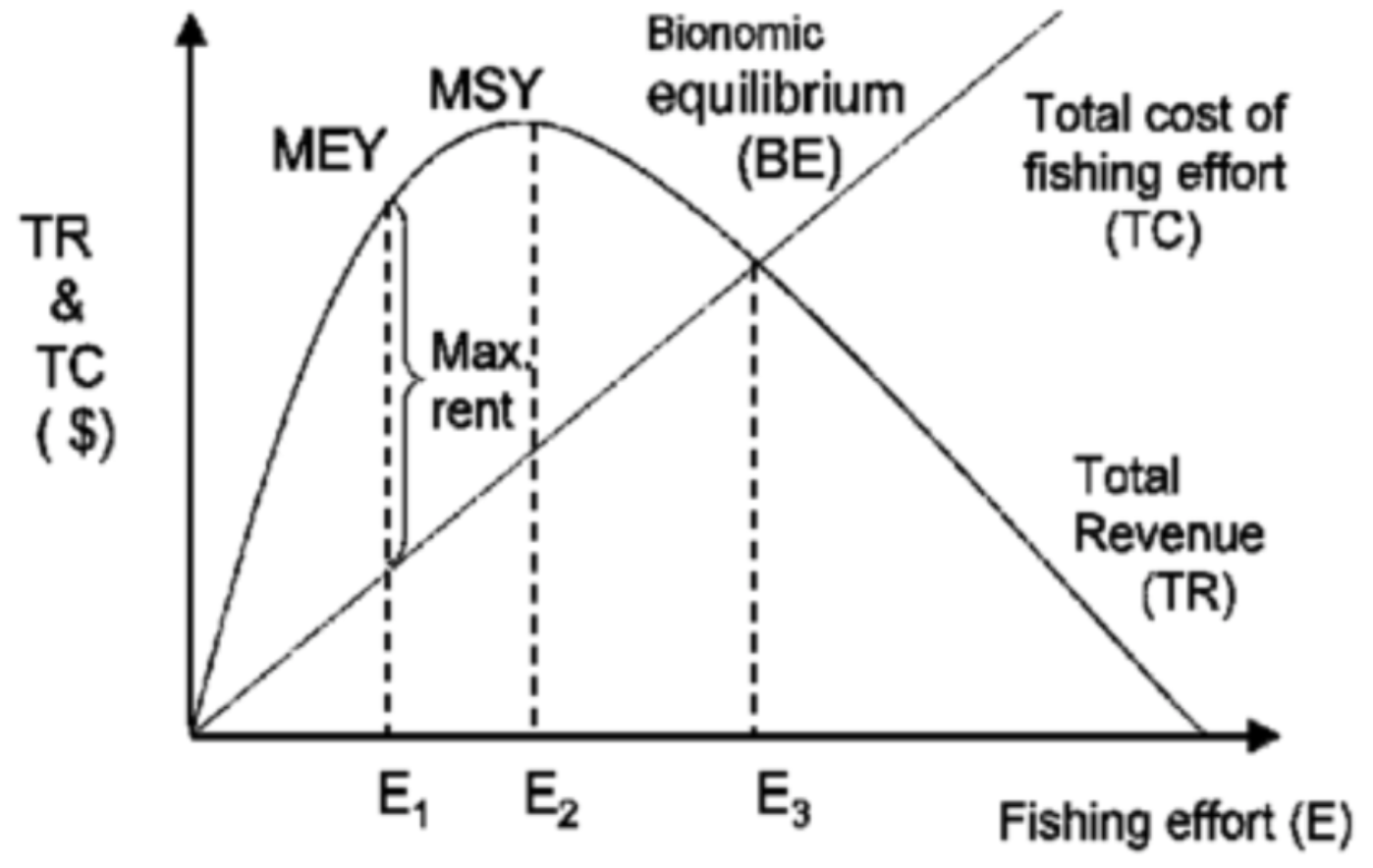
Figure 5: Bioeconomic ‘Gordon Schaefer’ Model
In Figure 5, moving from the bionomic equilibrium (E3) to MSY (E2) will yield less jobs but more biomass; and moving to MEY (E1) will yield less biomass and less jobs, but the economic profit will be maximized. The downside to this model is that it assumes static conditions; yet, ecosystems are dynamic over time and space, and technology and knowledge also grow over time, improving the catchability of each boat.
While the resource was not likely being ‘overharvested’ – that is, the flow of the resource does not appear to be suffering from depletion due to over-extraction; the resource appears to be at ‘overcapacity’ – with the stock of users profiting from the common pool resource exceeding the carrying capacity of the ecosystem – creating a build-up of outputs discharged into the ecosystem. The Gordon Schaefer model suggests that fishing effort in the Chiloe archipelago is exceeding the MEY and MSY, with competition for space incurring rivalry and output of effluent discharge exceeding sustainable levels.
To address the discharge of pollution into the ecosystem, a pure economic perspective would suggest that setting the rate of pollution to zero would not be economically efficient because the social benefit (marginal abatement cost) at this point would be far higher than the social cost (marginal damage) of producing one more unit (see Figure 6). An economically-efficient level of pollution will be set where the marginal abatement cost equals the marginal damage, where the two lines cross and reach equilibrium. This will equate to a level of pollution above zero, but from a purely rational economic view, this is optimal.

Figure 6: Socially Efficient Level of Pollution
Discounting
The final factor affecting the optimal level of resource utilization is the effect of discounting. If natural capital is assumed to be substitutable for human capital, then equating present value with the market value appears logical; but this assumption has proven to be a poor predictor for economic modelling. When benefits accrue over the long-term but costs over the short-term, discounting of natural resources becomes problematic, due to a natural inclination to apply too high of a discount rate to the long-term benefits. This hyperbolic discounting works to de-value the future benefits, reducing their present value and leading users to over-value the present costs at the detriment to the long-term sustainability of the resource. This type of discounting leads users to make inconsistent choices over time – making choices today that they will live to regret in the future, despite having the same information across time (Laibson, 1997).
In the Chiloe case study, the decision to proceed with intensively managed commercial aquaculture over the extent of the archipelago, with little recognition of the negative feedback responses described above, it becomes clear that the choice of discount rate for managing this resource reflects the positive time preference “for early consumption and delayed payment” (Ainsworth & Sumaila, 2005). By applying too high of a discount rate, future benefits of sustaining the fishery are diminished and the myopic policy objectives of profit maximization dominate (Sumaila & Walters, 2005).
SECTION 3: Policy Recommendations
The actual policy responses to the 2016 red tide event were strongly reactionary and so far, shallow. Fishery laws and regulations were reviewed, but little change has been made to date. Agreements have been developed between stakeholders, but these have been criticized as largely rhetorical with little impact in decision-making. Retraining programs were developed to transition artisanal fishing and shellfish harvesting communities toward alternative livelihoods; however, this has led to rapid deforestation for agricultural production, which has then destabilized soil – leading to massive erosion and land wasting in many areas around the archipelago. Tourism has also been perused by the government, as a means to offset the economic impacts to local communities; however, these actions have led to the commercialization of culture, further exacerbating the social impact to the people of this region (Mascareno et al. 2018). Based on the above economic analysis, the following policy recommendations are presented:
1. Incorporate a Social-Ecological System Approach to Management
Borrowing ideas and concepts from SES research, the full environmental cost of input and output flows from the economy can be estimated, monitored and managed for long-term sustainability. By incorporating responsive and adaptive governance into the management of the sector, policy and regulations can be built which adapt to changes in the system and work to improve the resilience and long-term sustainability of the social and environmental systems in which they operate.
- The Gordon Schaefer model is a helpful economic tool to determine a range of yields depending on different policy objectives. As illustrated in Figure 5, policies which reduce fishing effort will improve the social and environmental sustainability of the system. Using the model, different yields can be estimated, and flexible policies can be developed to address the excessive resource pressure being imposed by commercial practices. The system can then move toward a Maximum Sustainable Yield (MSY), or a level of commercial activity that effectively manages effluent discharge within sustainable levels.
2. Address Industrial Discharge
Once the externalities imposed by the commercial aquaculture industry are estimated and a desirable level of commercial activity is determined, the following policy tools can be used to offset or eliminate the effect of the externalities:
- To reduce the ‘marginal external cost’ (indicated in Figure 4) of commercial production, a production tax or Pigovian tax could be applied to the commercial aquaculture sector to bring the market equilibrium back toward the socially optimal equilibrium. The price should be adjusted to balance the cumulative effects of the non-priced negative externalities that the sector imposes on the local community; however, determining this price is difficult.
- If the commercial aquaculture sector is sufficiently large and developed, tradable permits could be issues to each operation and those that reduce annual environmental release can sell their un-used permits to heavier emitters.
- Referring to the first algal bloom event, the dumping of 4,600 tonnes of dead salmon into the environment of a shared common pool resource can be avoided in the future by redefining property rights through policy and regulation. The Government of Chile should develop stricter regulation for how commercial waste is managed, and implement stronger monitoring and enforcement services to institutionalize sustainable management practices.
- Current subsidization of the commercial aquaculture industry should be reviewed and if substantial subsidization is present, these disabling policies should be reduced or removed entirely. By removing input or output subsidies for commercial producers, input costs will rise and/or output revenues will decline, working to reduce the collection of abnormal economic rent of activities negatively impacting the functional operation of the system. Alternatively, subsidies could be provided for affected community members to offset their individual reduced social welfare or utility.
- Using the social welfare function (SWF), the level and distribution of individual social welfare should be identified across all affected stakeholders and communities. By aggregating individual utility (or negative utility) at different levels of commercial intensity, alternative equilibria options can be better assessed.
3. Address Hyperbolic Discounting
As described above, hyperbolic discounting often leads users to make choices today that they live to regret in the future, despite having the same information across time. In addition, whole future generations are not able to participate in the present decision-making process, and their interests are unheard – even though they will be directly impacted by the decision. Omitting the voice of future generations from decision-making creates an inter-generational externality which is wholly un-accounted for in the discount rate. Traditional economic tools (taxation for example) do not work well to deal with this issue, so economists have developed innovative alternatives including “inter-generational discounting”. Which works as a ceiling, holding the discount rate below the market rate. Some have even suggested setting the discount rate to zero so that future benefits are not discounted over time at all.
REFERENCES
Ainsworth, C., Sumaila, U. (2005). Intergenerational valuation of fisheries resources can justify long-term conservation: a case study in Atlantic cod (Gadus morhua). Canadian Journal of Fisheries and Aquatic Sciences Vol. 62(5), pp. 1104-1110
Anderson, D. (2009). Approaches to monitoring, control and management of harmful algal blooms. Ocean & Coastal Management Vol.52(7), pp.342-347 http://dx.doi.org/10.1016/j.ocecoaman.2009.04.006
Barrett, G., Caniggia, M., Read, L. (2002). ‘There are more vets than doctors in Chiloé’: social and community impact of the globalization of aquaculture in Chile. World Development Vol. 30(11), pp. 1951-1965.
Barton, J., Gwynne, R., Murray, W. (2008). Transformations in resource peripheries: an analysis of the Chilean experience. Area Vol. 40(1), pp.24-33.
Barton, J., Roman, A. (2016). Sustainable development? Salmon aquaculture and late modernity in the archipelago of Chiloé, Chile. Island Studies Journal Vol. 11(2), pp. 651-672.
Baumol, W., Oates, W. (1993). The Theory of Environmental Policy: Second Edition. Cambridge University Press. New York, USA
Buschmann, A., Farias, L., Vasquez, M. (2016). Informe final Comisión Marea Roja. Academia Chilena de Ciencias, Santiago, Chile. Available from: http://www.academiadeciencias.cl/wp-content/uploads/2017/04/InfoFinal_ComisionMareaRoja_21Nov2016.pdf
CORFO. (2016). Latest Developments in Chile’s Algal Bloom. Corporacion Fomento de la Produccion. Presentation from: Global Outlook for Aquaculture Leadership, 2016. Guangzhou, China – Available from: https://www.aquaculturealliance.org/wp-content/uploads/2017/06/Day3_AdolfoAlvial.pdf
Daughters, A.(2016). Southern Chile’s Archipelago of Chiloé: Shifting Identities in a New Economy. Journal of Latin American and Caribbean Anthropology Vol. 21(2)
FAO (2012). FishstatJ, Software for Fishery and Aquaculture Statistical Time Series. Rome. FAO Available from: http://www.fao.org/fishery/statistics/software/fishstatj/en
Glibert, P., Allen, J., Artioli, Y., Beusen, A., Bouwman, L., Harle, J., Holmes, R, Holt, J. (2014). Vulnerability of coastal ecosystems to changes in harmful algal bloom distribution in response to climate change: projections based on model analysis. Global Change Biology Vol.20, pp.3845-3858. http://dx.doi.org/10.1111/gcb.12662
Gonzalez, S. (2016). Red tide and labor unrest reduce Chilean salmon production. Global Agricultural Information Network (GAIN) Report No. CI1611. USDA, Washington, D.C.
Gunderson, L., Holling, C. (2002). Panarchy. Understanding Transformations in Human and Natural Systems. Island Press: Washington DC, USA
Heisler, J., Glibert, P., Burkholder, J., Anderson, D., Cochlan, W., Dennison, W., Dortch, Q., Gobler, C., Heil, C., Humphries, E., Lewitus, A, Magnien, R, Marshall, H., Sellner, K, Stockwell, D., Stoecker, D., Suddleson, M. (2008). Eutrophication and harmful algal blooms: a scientific consensus. Harmful Algae Vol.8 pp.3-13. http://dx.doi.org/10.1016/j.hal.2008.08.006
Laibson, D. (1997). Golden Eggs and Hyperbolic Discounting. Quarterly Journal of Economics. Vol. 112 (2), pp. 443-478
Mascareno, A., Cordero, R., Azocar, G., Billi, M., Henriquez, P., Ruz, G. (2018). Controversies in social-ecological systems: lessons from a major red tide crisis on Chiloe Island, Chile. Ecology and Society 23(4):15. https://doi.org/10.5751/ES-10300-230415
Muñoz, J., Urbina, M., Garreaud, R., Iriarte, J. (2018). Hydroclimatic conditions trigger record harmful algal bloom in western Patagonia. Scientific Reports Vol.8 pp.1330 http://dx.doi.org/10.1038/s41598-018-19461-4
Scheffer, M. (2009). Critical Transitions in Nature and Society. Princeton University Press, Princeton, New Jersey, USA.
Sumaila, U. (2002). Achieving sustainable fisheries: The economic dimension. Paper presented at the UNEP workshop on fisheries subsidies and sustainable fisheries management, 2001. UNEP, Geneva
Sumaila, U., Walters, C. (2005). Intergenerational discounting: a new intuitive approach. Ecological Economics, Vol. 52, pp. 135-142
Wekimun (2016). Wekimun Rural Training Centre for Aboriginal Youth in Chile. Government of Canada Project No. CA3S065649001
